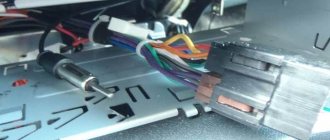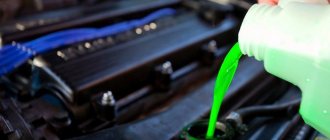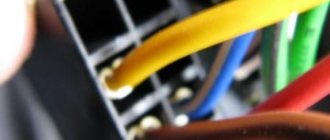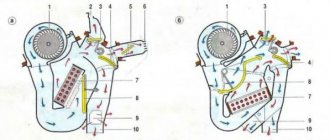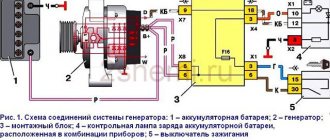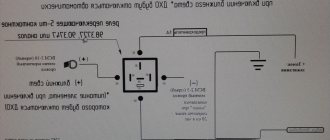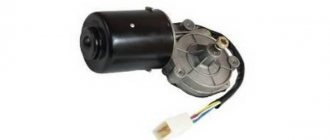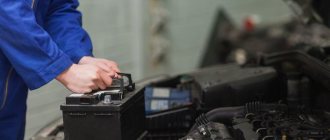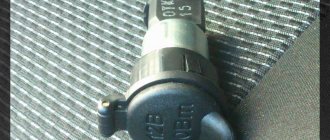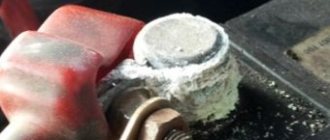The interaction of components in a car provides the driver and his passengers with comfort and safety. But if something goes wrong, the car needs professional help.
The battery in a car is of great importance, allowing the car to drive on the road at night, illuminating the road ahead. In addition to lighting and signaling to other road users, the battery performs other functions - for example, starting the engine. Of course, such a demand for the electrical element in question leads to the need to replace the battery. And although it is not necessary to go to a service station to replace it, it is worth following a clear sequence of steps.
How to properly remove the battery?
Before disconnecting the battery, you will need to take precautions. It is worth knowing that the battery in a car contains an amount of energy that can cause fatal injury to a person! Moreover, the battery contains corrosive substances that can produce flammable gas.
If you want to understand the question of how to properly remove the battery from a car, prepare the necessary tools and materials. For work you will need: a wrench extension, a set of attachments, safety glasses and gloves, an old toothbrush, a tray, clamps, water and baking soda. Before starting work, turn off the ignition and wear safety glasses and gloves to protect your eyes and hands.
Next, follow the established sequence:
- First you will need to find the negative terminal on the battery, which often stands out due to its black coating. Often the negative terminal is indicated by a “-” sign. Accordingly, the positive terminal is indicated by the symbol “+”
- Determine which attachment you will need. Size matters if you need to unscrew the nut from the negative terminal. First the negative terminal is disconnected
- Take the nozzle and place it on the nut located next to the negative terminal. Estimate the size of the socket for loosening the nut. The attachment fits onto the wrench, which may require a wrench extension.
- Turn the key counterclockwise. Disconnect the negative wire so that it does not touch the terminal
- Similar actions are performed with the nut on the positive terminal. After disconnecting the positive wire from the terminal, do not allow its bare end to come into contact with the metal surfaces of the car.
- After turning off the power to the battery, disconnect the fastener, and then lift the battery from the compartment. Make sure you get outside help first, as the battery weighs up to 20 kilograms
- Clean the compartment with a toothbrush and baking soda, then let the area dry
After completing the above steps, you can begin installing a new unit and then connecting the battery.
How to properly tighten the terminals on a car battery?
The topic is quite relevant, many car enthusiasts are not familiar with the nuances. The correct question is: how tightly should the terminals be tightened?
In order to understand what the essence of the issue is, you need to clearly see the battery terminals
Normal
For normal terminals, the distance between the ears should be uniform, they should be parallel to each other.
Pinched
With clamped terminals, the ears are closed almost to the point of contact, and even if the nut is released, the ears will not come apart. It is better to get rid of such terminals and buy new ones, since they are inexpensive and are considered consumables.
There are car enthusiasts who do not tighten the terminals at all, simply throw them on the battery terminals and drive, because of which:
1. Poor contact between the current lead and the terminal. Which leads to losses and heating of poorly contacted elements.
2. When driving on an uneven road, shaking may cause a loose terminal to jump off the battery and short to ground.
How to connect a new battery?
Now let's look at how to properly connect the battery in a car. Make proper preparations before starting installation. Remove dirt, dust and other debris from the corresponding connector, and then clean the internal surfaces of the wire tips using fine-grained sandpaper.
Before installing a new battery pack, you need to clean the terminals. The installation sequence for a new battery is no different from installing the old unit. Place the pressure plate on and then tighten the clamp bolts. Perform the work carefully so as not to damage the integrity of the product. To connect the battery, use the following algorithm:
- Follow the reverse sequence of steps when installing the battery. Connect the "+" wire to the corresponding terminal first, and then connect the "-" wire to the negative terminal.
- Some manufacturers, for safety reasons, make terminals of different diameters, thereby preventing accidental confusion when connecting wires to terminals.
- Tighten the mounting nuts firmly using a wrench.
It is most often necessary to install a new battery pack due to the exhausted resource of the old one. If you are not confident in your own abilities and skills in working with the tool, use the support of the technical center staff.
Battery care
Proper care and operation will extend the life of the battery.
To maintain the battery, you need to wipe its case with a dry, clean cloth to remove moisture and remove dirt and dust from the ventilation holes. If the battery is serviceable, then regularly measure the electrolyte level and its density. Monitor the condition of the contacts, clean the terminals and treat them with a special anti-corrosion compound. The installation sequence is very important when installing a battery. The main thing is to remember that you must connect the plus first, and then the minus. If everything is done correctly and the on-board computer is configured, then you can count on trouble-free operation of the car.
Recommendations from professionals
Carry out work in an open space, since gases do not accumulate outside. It is advisable to remove jewelry, including rings and bracelets. Use personal protective equipment - dielectric gloves and safety glasses. The wires should be placed as far as possible from the battery. This is necessary in order to prevent wires from getting into terminals and metal parts of the car.
Note that after disconnecting the wire from the positive terminal, the residual current can harm the operation of the car's electrics if the wire touches the metal surface of the body. This may also cause a short circuit.
Remember that standard car batteries can generate current up to hundreds of amperes, which is equivalent to charging a welding machine.
The batteries in hybrid cars can produce 300 volts of energy, which means the current is dangerous to human life and health. Wiring is often differentiated by color. You can reduce the risk of electric shock if you wear gloves and insulated tools.
How to connect the battery to the car
In modern cars, batteries can be located under the hood, in the trunk, or placed in the cabin. A car battery is called a starter battery because its main function is to start the engine. Energy is also consumed to maintain on-board consumers and communication tools such as the winch. An important condition for maintaining the on-board system and the battery itself in good condition is the order in which to connect the battery to the car.
How to connect the battery in a car: plus or minus
Before connecting the battery to the car, you must first make sure that it is fully charged. It is necessary to make sure that the battery case is intact, without cracks or swelling. Before installation, the battery must be wiped with a solution of baking soda, neutralizing microdoses of acid and creating an insulating layer. If the battery terminals are coated with plaque, they need to be cleaned with a toothbrush and baking soda solution. Conductive lubricant is applied to the contact points of the leads.
The socket in which the battery is installed must match the form factor of the battery. It is necessary to use additional latches and brackets so that the case sits on the base like a glove. This will prevent the battery from overturning when driving over bumps, and the electrolyte will not spill.
The battery has 2 terminals, positive and negative. You should connect the battery in the car carefully. How to assemble the circuit correctly, in what sequence? It is safe to connect the positive contacts first, the red wire is used as standard. But each time you need to check the contacts additionally, according to the terminal markings. True, the manufacturers are on the safe side; they make the contacts with different cross-sections so that the wrong terminal is not put on.
The negative contact is always connected last and removed first, so as not to create a short circuit to ground. It is important to tighten the fasteners until they lock into place. Any loosening of the contacts will lead to heating of the area due to resistance. During the period of starting the motor, a starting current passes through the line, many times greater than the numerical value of the capacitance. When connecting the battery, all on-board consumers must be turned off and the ignition key must be removed from the socket.
Will the car start if the battery is connected incorrectly?
Let's ask ourselves the question, what will happen if the battery is connected to the car the other way around? The consequences will be different if the connection is mixed up with the engine running and with the ignition off. If the engine is running, the diode bridge and other electronics will burn out. Modern cars have foolproof protection.
It happened, we performed a polarity reversal with the engine turned off, and the radio, amplifier and other secondary consumers burned out. Sometimes blown fuses help out. If you connect the battery incorrectly, the less trouble there will be, the sooner you disconnect the machine from the power source.
Now many people use portable storage. In this case, the battery is recharged without removing it from the car. It is important to connect the charger to the battery correctly, avoiding polarity reversal. It is much easier to make a mistake in the connection here. Quick-release contacts in the form of “crocodiles” will fit any output. How will the devices react?
The factory-made memory is equipped with fuses that will not allow you to make a mistake. When connected, unprotected chargers form a transformer pair with the battery; incorrect connection will be accompanied by a hum. If you do not stop charging, the battery will reverse polarity. To correct the situation, you need to discharge the battery to zero as quickly as possible and charge it correctly. In order not to solve man-made problems, you need to know how to properly connect the charger to the car’s battery.
If the charger is powered from the mains, the battery must be removed from the car. Charging lasts 8-12 hours in a cool, ventilated area. Before connecting the charger, you need to make sure that the electrolyte level and its density are normal. Remove the plugs on the battery being serviced. Set the charging current.
How to connect an amplifier in a car to a battery
For some time now, car radios have become an indispensable component. For optimal power supply, the device is connected directly to the battery. This allows you to listen to music while the engine is off. But you need to understand that if a leak occurs, the radio can discharge the battery to zero.
For a powerful and clear sound of music, an amplifier is used that uses the energy of the battery, increasing it to the required parameters. The amplifier's power is connected to the battery through a copper cable with a fuse designed for the current strength.
The wires to the location (usually in the trunk) are laid in a corrugated tube. A fuse is mounted to the positive wire, and the negative contact is shorted to ground. The radio and amplifier are connected by an interconnect cable.
What is extremely undesirable to do?
Adhere to certain security measures to protect yourself from possible troubles and financial waste. Do not perform actions that could damage the battery housing. Do not tilt or overturn the battery. Also, do not damage the filler plugs or necks.
Do not add acid or store a discharged battery, especially at sub-zero temperatures. By damaging the contacts, you risk incurring additional costs by damaging the equipment. Be careful when working to remove and connect the battery in your vehicle.
What happens if you connect the wires incorrectly?
This situation is called a polarity reversal, and the level of consequences of such an error can vary.
The most negative option is if you connected the wires in the wrong order while the engine is running. Any outcome is possible here: from a blown fuse to failure of the on-board electronics (first of all, the diode bridge of the generator burns out, but all consumers turned on at that moment can suffer - from the radio to the ECU).
The faster you react, the less damage there will be. If you observe active sparking during connection, try to immediately disconnect this terminal.
If you leave everything as is, the wires begin to get very hot and melt, which can cause a fire.
Safety precautions when checking polarity
When determining the polarity of wires, you must follow the safety rules:
- Do not work with electrical appliances that are damaged or faulty.
- Do not use poorly functioning plugs and sockets.
- When working with live wires, do not touch them with wet hands.
- You need to work while on a mat made of insulating materials.
- If there is high humidity in the room, then work should be performed with rubber gloves.
If the technician handles the wires carelessly, it could result in serious injury.
Which terminal to put on the battery first?
The battery installation process requires no less attention than the removal process. Here you also need to correctly determine which terminal to put on first so that there is no risk of a short circuit.
Above, the information about which terminal should be removed first contains an explanation of why it is advisable to leave only the “plus” connected to the battery. Accordingly, the “plus” terminal should be put on the battery first, and only then the “minus” terminal should be put on.
Important: Unlike the process of removing a battery, installing it is a much more potentially dangerous process. Here you cannot first add “minus” and then “plus”, otherwise there is a high risk of damage to the on-board network.
